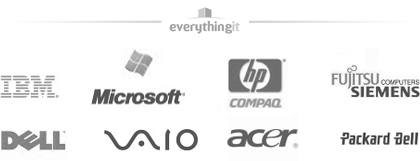
Hewlett Packard have been granted a US patent for their new developments in ‘transparent screen technology’, being given their listing after an initial application 6 years ago.
 The technology would appear to now be at a more advanced stage, with HP planning the system to be able to enable its users to see images from a screen (such as on TV sets or computers, amongst other applications) while also able to keep an eye on what is directly behind it. It is claimed that such a process would be beneficial in adding key data to car windscreens without causing a distraction to the driver.
The technology would appear to now be at a more advanced stage, with HP planning the system to be able to enable its users to see images from a screen (such as on TV sets or computers, amongst other applications) while also able to keep an eye on what is directly behind it. It is claimed that such a process would be beneficial in adding key data to car windscreens without causing a distraction to the driver.
The proposed developments (given the working title of ThruScreen) are noted by HP as being much more developed than others, in that they have a theory which would see the images (‘available’ in greyscale or full colour rather than the more commonly-proposed single colour images) on display through the use of ‘light-reflective slats’. Current methods of similar technology include text-based projections from mirrors and teleprompters (used mainly in newsrooms and event hosting).
Davis Murphy Group Europe’s principal technology analyst Chris Green said of the plans that he has seen first-hand during research: “HP has been working on trying to perfect this technology for about two decades. There’s many real world applications, from augmented reality to displaying information on flat surfaces such as web browsers on windows or heads-up displays in cars. It may look gimmicky in the movies but there’s huge financial potential in this if you can get the technology right and sell it for an acceptable price.”
Meanwhile, the see-through methods will sit alongside developments in the past year from possible transparency rivals Samsung (flexi-screen), Google (augmented reality), and most recently a group of university students (‘bubble-vision’) in planned new systems.
However, while theirs is only at the development stage so far, could HP’s planned new screen technology (also ‘demonstrated’ in laptop form last year) become a fast breakthrough in the world of entertainment, or will the lack of valid proof of development past the concept stage mean that it is the last that is heard about transparent screens for a few years?

